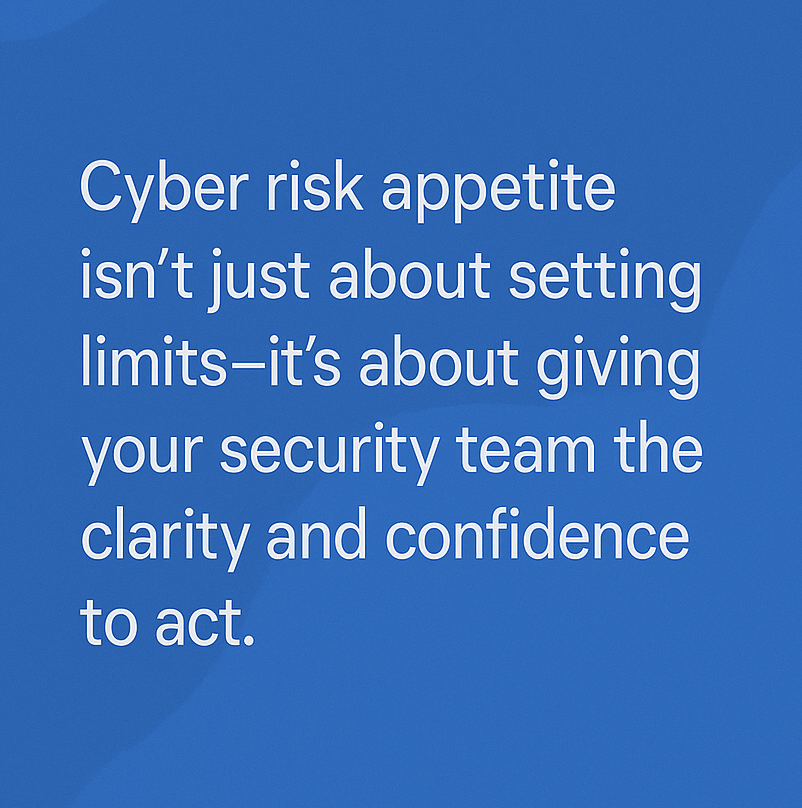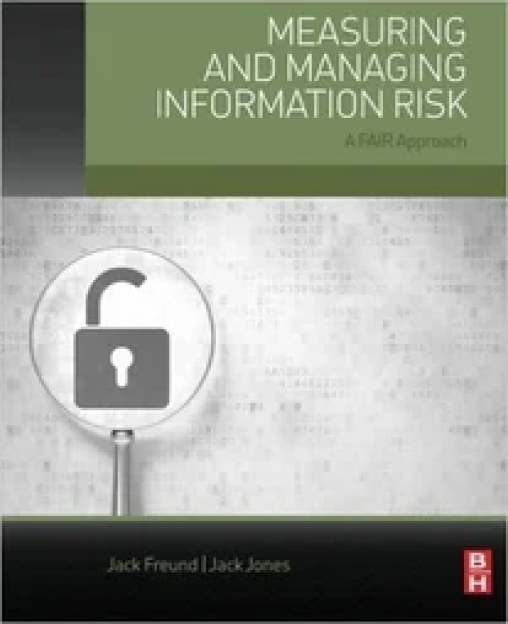Setting Cyber Boundaries: How to Define Cybersecurity Risk Appetite in a Threat-Heavy World


Risk isn’t just something to avoid, it’s something to analyze and harness. In an age of relentless ransomware, supply chain attacks, and misconfigured cloud environments every organization needs a clear stance on cybersecurity risk. That’s where cybersecurity risk appetite statements come in—they define how much cyber risk you're willing to accept, and where to draw the line.
 This blog post is contributed by GuidePoint Security, a FAIR Institute sponsor. Author Will Klotz is Senior Information Security Consultant at GuidePoint Security.
This blog post is contributed by GuidePoint Security, a FAIR Institute sponsor. Author Will Klotz is Senior Information Security Consultant at GuidePoint Security.
When managed well, cybersecurity risk becomes a tool for strategic decision-making. But that only works if your organization shares a clear understanding of how much risk is acceptable and under what circumstances. Clear boundaries are required to avoid misalignment between departments such as IT, security, and business leaders.
What Is a Cybersecurity Risk Appetite Statement?
A cybersecurity risk appetite statement defines the level and type of cyber threats an organization is willing to accept in pursuit of its digital objectives. It helps leadership distinguish between smart risk-taking that could expose the business to a cyber attack or costly data breach. It guides decisions like: Which systems deserve the most protection? How fast do we patch? How aggressively do we monitor and respond? Think of it as a compass, not a map, that guides cybersecurity risk decisions across departments.
Why Cyber Risk Appetite Matters
Cyber Risk appetite is an effective tool to help keep an organization safe. It’s essentially your organization’s strategic stance on how much cybersecurity risk it’s willing to accept in pursuit of its business objectives. In addition, it can help prevent over- or under-spending on security, while aligning IT and /security teams on risk thresholds. This enables teams to prioritize remediation efforts based on risk to the business. By having clear cyber risk appetite statements in place, teams are more able to work together toward common goals, using the same language, making day-to-day security operations easier for all.
Cyber Risk Appetite vs. Cyber Risk Tolerance: More Than Semantics
At first glance, risk appetite and risk tolerance might sound like interchangeable jargon. But understanding the difference is critical to building a practical, forward-looking cybersecurity risk framework.
- Cyber Risk Appetite is about understanding your limits and making informed, consistent decisions. By codifying your boundaries, you empower your security team to act with clarity, speed, and confidence. Appetite shapes policy and investment.
- Cyber Risk Tolerance defines the operational limits or controls–how much deviation from desired cyber risk outcomes you can withstand before action is required. It’s essentially the day-to-day guardrails that trigger alerts, controls or decisions when thresholds are crossed. It’s quantifiable and operational.
Cyber Risk Appetite Statements: A Step-by-Step Guide
Creating an effective risk appetite statement isn’t guesswork—it’s a structured process. These six steps will help you define a statement that reflects your cybersecurity strategy and strengthens your risk culture.
Step 1: Understand Risk Culture
Understand the shared values, beliefs, and behaviors that influence how individuals within an organization perceive, assess, and act on risk. Risk appetite should directly support business goals and must align with an organization’s risk culture for consistent decision-making. .
Step 2: Involve Key Stakeholders
Engage leaders from operations, legal, IT, finance, and other core areas. Their insights help shape realistic thresholds and gain buy-in across the business.
Step 3: Define Core Risk Categories
Tailor your categories to your industry and profile—such as data security, cloud security, endpoint security, compliance, and third-party risk.
Step 4: Establish Risk Appetite Levels
Use a defined scale (e.g., No Appetite, Low, Moderate, High, Aggressive) and be specific.
Example: “We aim to experience no more than one high-severity security incident impacting customer data per year, with a mean time to detect (MTTD) under 24 hours.”
Step 5: Measure What Matters
Quantify appetite where possible. Pair qualitative statements with metrics or thresholds so you can monitor and manage risk over time. Example: If your risk appetite statement is
“We have a low appetite for customer-impacting downtime,” the measurable threshold may include, “Ensure maximum system downtime is less than 2 hours per quarter for all customer facing platforms with an uptime percentage goal of greater than 99.95%.”
Step 6: Define Risk Tolerances and Indicators
Set maximum acceptable limits and identify key risk indicators (KRIs) to flag when exposure drifts too far.
Policy to Practice: Make Cyber Risk Appetite Actionable
Cybersecurity risk frameworks like NIST CSF 2.0, FAIR, and ISO 27001 emphasize the importance of defining cyber risk appetite as part of a mature security governance strategy. These frameworks help translate strategic risk boundaries into actionable policies and controls across cloud, network, and application environments.
- Keep it practical: Avoid vague, abstract language.
- Make it relevant: Translate cyber risks to business units and projects to protect data confidentiality, ensure system uptime, and reduce the 3rd party attack surface.
- Review regularly: Adjust for shifts in the threat landscape, new attack vectors, and regulatory changes.
- Embed it: Integrate into training, policy, performance reviews, and planning to ensure threat detection coverage and timeliness of patching.
Sample Risk Appetite Statements
Let’s bring this to life. Here are some cybersecurity risk appetite statements that help guide an organization with proactive defenses to protect customer data and maintain system uptime. .
- Data Security:
“We have zero appetite for unencrypted sensitive data stored in public cloud environments”. - Identify & Access:
"We have a low appetite for privilege escalation risks and require MFA for all admin access.” - Third-Party Risk:
“We tolerate no vendor access to sensitive systems without current SOC2 or equivalent assessment.” - Security Monitoring:
We have a moderate appetite for false positives, but a low appetite for undetected malicious activity.” - Compliance Risk:
“We have zero appetite for intentional non-compliance. Inadvertent violations may be tolerated if identified and resolved quickly.” - Operational Risk:
"We have a low appetite for core service disruptions, but are open to controlled experimentation with new processes.”
Turn Risk Appetite Into a Business Advantage
Cyber risk appetite isn’t just about setting limits—it’s about giving your security team the clarity and confidence to act. With a well-defined cyber risk appetite, your organization can prioritize the right threats, invest in the right controls, and move fast without losing control.
Want to go deeper? Read this whitepaper: Cybersecurity Risk Culture, Appetite and Tolerance.









